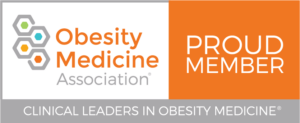Which is Worse – Low Muscle Mass or High Fat Mass?
When talking about body composition and metabolic health, much attention is directed at reducing body weight as the primary indicator of progress. Study after study uses the Body Mass Index (BMI) as the metric for comparison to outcomes, but the BMI is of limited value as it does not account for body composition – fat vs muscle.
Weight Loss Culture
Modern social norms tend to favor a skinny body rather than a large body, as evidenced by the presence of Body Dysmorphic Disorder and eating disorders such as Anorexia Nervosa. Also, there is a $72.6 billion market of products and services focused on weight loss in the United States. As a whole, we are obsessed with losing weight.
Research shows, however, that weight is a minor factor when it comes to longevity. Scale weight and BMI just don’t tell the whole story, because they cannot discriminate between fat mass and lean body (muscle) mass. To determine these measures requires body composition analysis, a measurement that is simply not practical to obtain for large numbers of people.
that weight is a minor factor when it comes to longevity. Scale weight and BMI just don’t tell the whole story, because they cannot discriminate between fat mass and lean body (muscle) mass. To determine these measures requires body composition analysis, a measurement that is simply not practical to obtain for large numbers of people.
As humans age, there is a steady decline in skeletal muscle mass in the later years (sarcopenia) and a relatively rapid increase in fat accumulation starting from a young age. Both decreasing lean body mass and increasing fat mass are associated with inflammation, impaired metabolic health, and a plethora of chronic diseases such as cardiovascular disease, cancer, and premature death. Are we right to be so fixated on reducing fat? Or, should we pay more attention to building muscle?
So, the important question is . . . Which is worse: low muscle mass or high fat mass?
Answers from a research study
In a study of 877 Korean adults over age 65 followed over 3.5 years, clinical history and body composition data was analyzed in relation to likelihood of death. The group in this study averaged 75.3 years in age, and 6.3% (55) of them died during this follow-up period.
In terms of clinical risk factors, it was discovered that individuals who exercised more frequently and those who had higher albumin (the most common protein found in the blood) levels had lower rates of mortality.
Here are several clinical factors that were not predictive:
- Hypertension (high blood pressure)
- Diabetes
- Heart disease
- Stroke
- Abnormal cholesterol levels
In terms of body measurements, when adjusted for variables, the following were not predictive:
when adjusted for variables, the following were not predictive:
- Body Mass Index (BMI)
- Waist circumference
- Fat mass
- Fat proportion
The following body measurements, however, were predictive of mortality:
- Lean body mass/muscle mass
- Lean mass index – kg/m^2
Thus, high fat mass was not associated with all-cause mortality, but low muscle mass was.
Another similar study
In a study of the NHANES data, considered a representative sample of adults in the United States, body composition was examined in regards to likelihood of death in nearly 56,000 individuals.
Fat mass was divided into quintiles, and the middle (3rd) quintile showed the lowest likelihood of death. This pattern created a U-shaped curve for predicted fat mass and all-cause mortality – fat masses at the lowest and highest quintiles was associated with higher mortality from all causes.
This pattern was more pronounced in younger individuals. Over the age of 60 years, higher fat mass actually appears to be protective. We must use caution, however, when interpreting this finding, because there are likely several confounding variables that accounted for this finding. For example, individuals with high fat mass were unlikely to have been suffering from conditions such as malnutrition, cancer, etc. that could hasten death.
For lean mass, however, there is an L-shaped association with all-cause mortality. Individuals with lower lean body (muscle) mass were more at risk of death from all causes. Similar results were seen with cardiovascular, respiratory, and cancer mortality.
The Takeaway
Ultimately, it’s important to aim for higher muscle mass as we age, and lower fat mass in our younger years.
Muscle mass is critical, not only for strength and function, but also for metabolic health. Skinny isn’t necessarily healthy. Strong is healthy.





